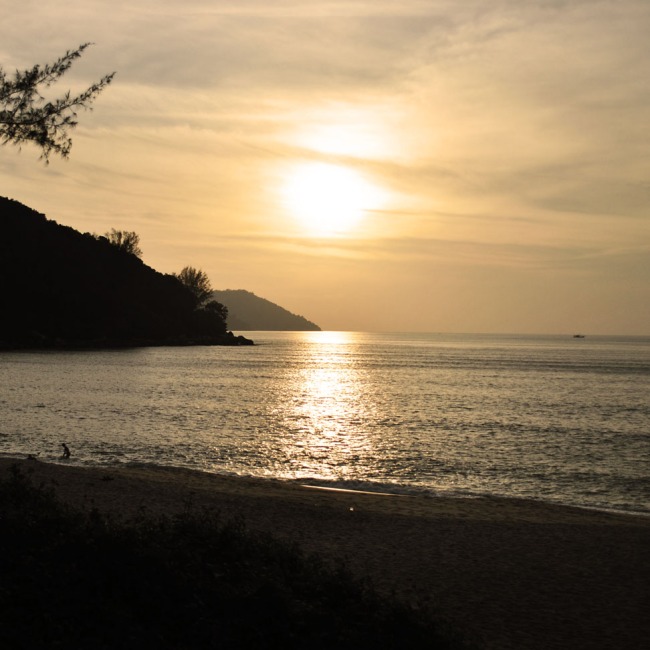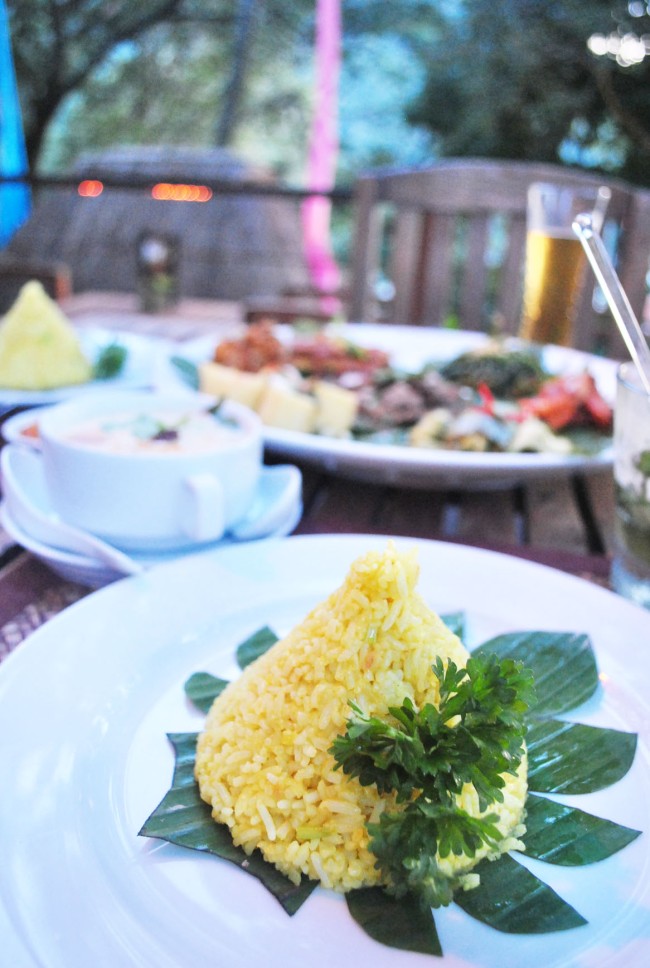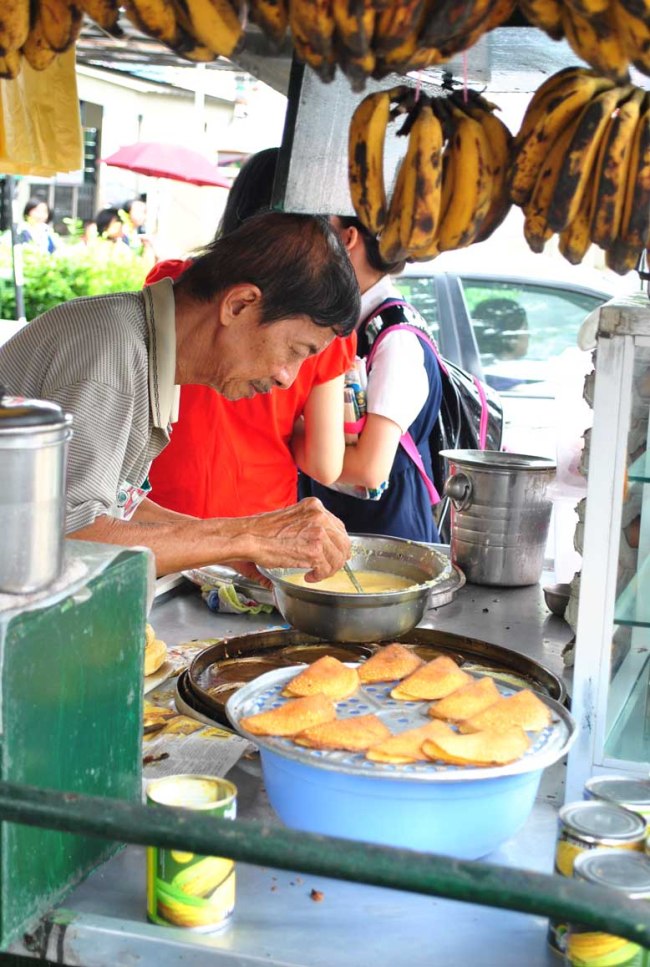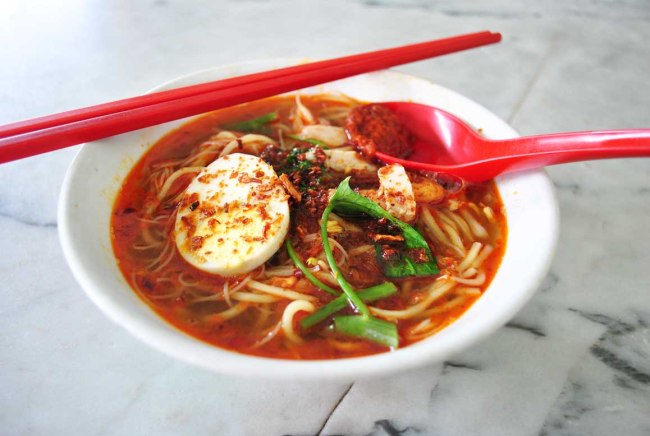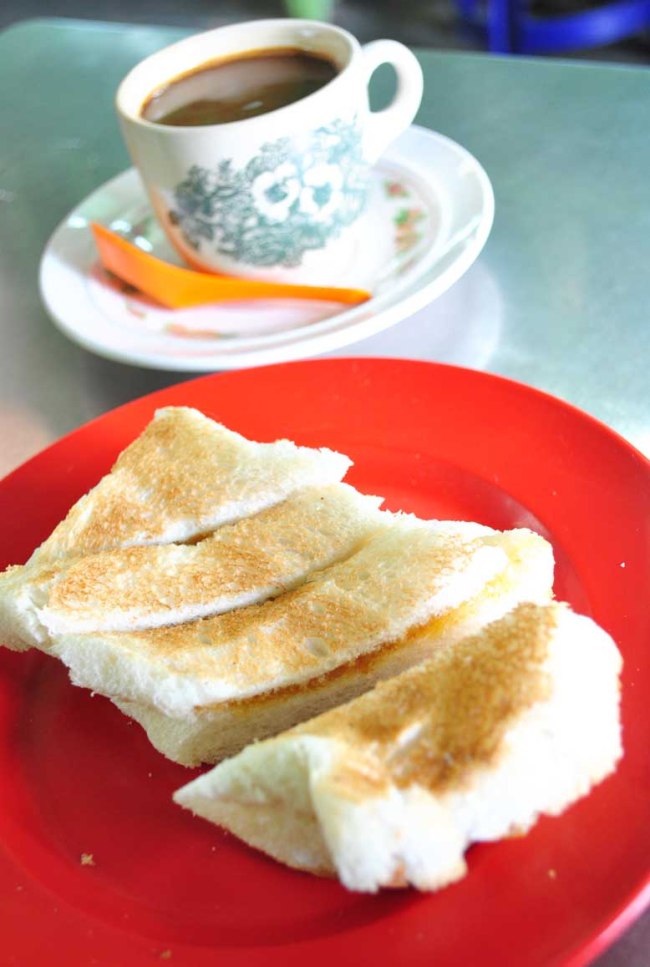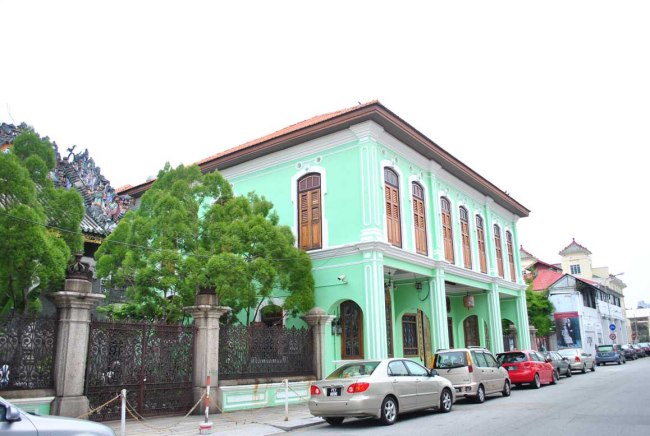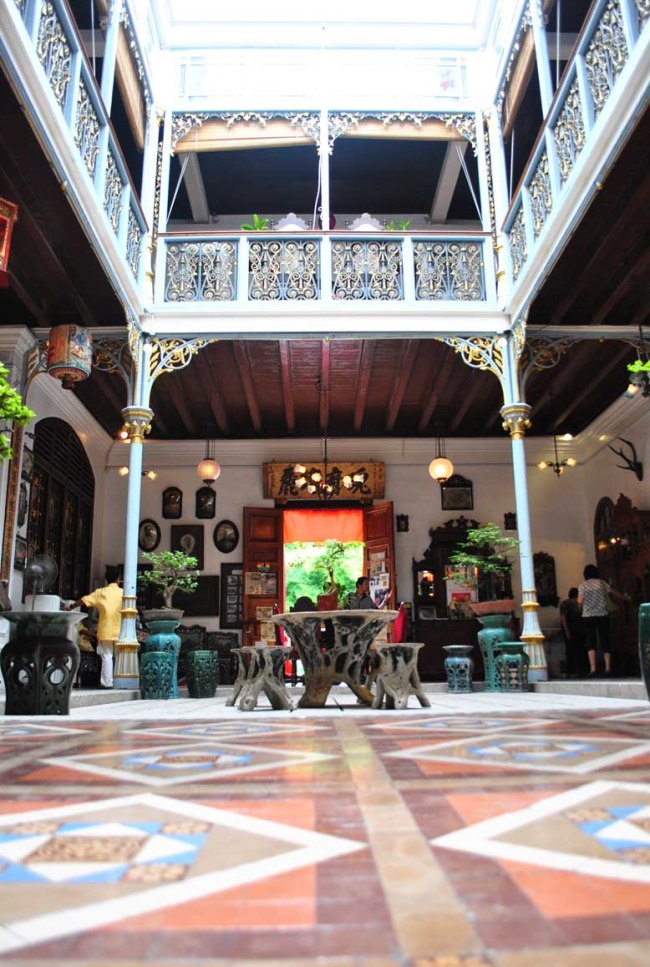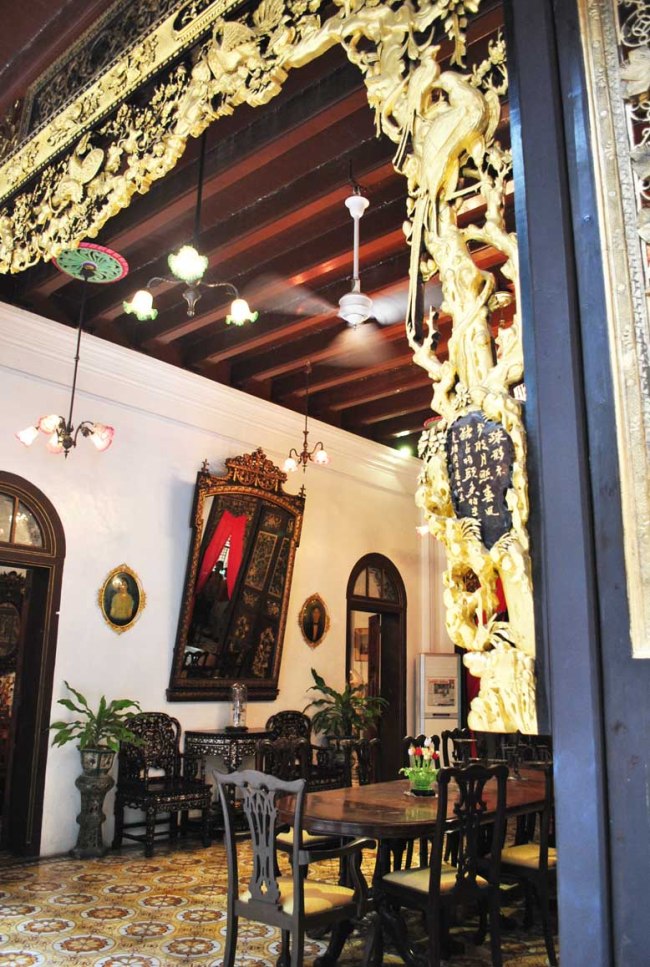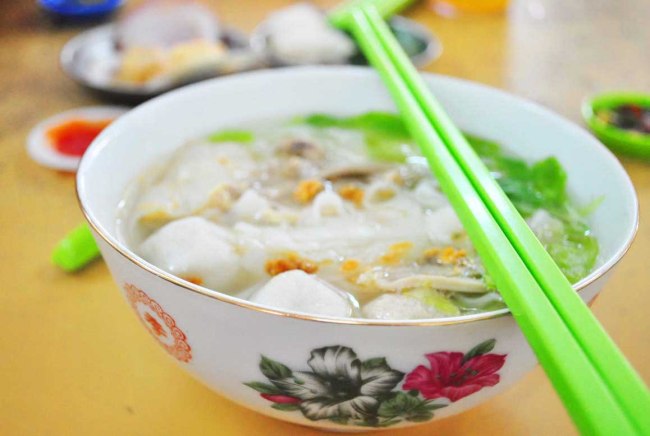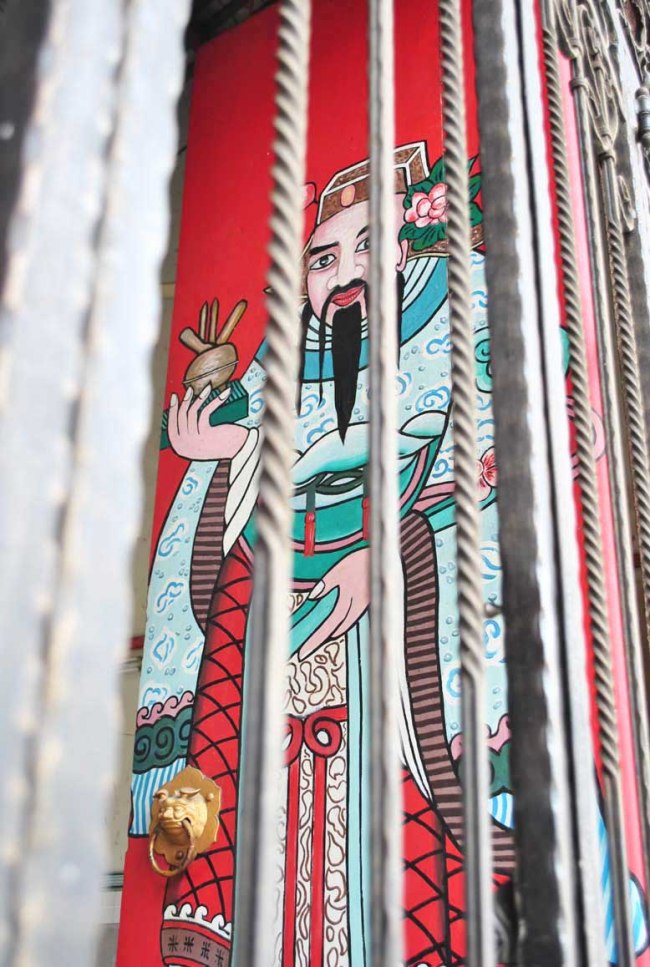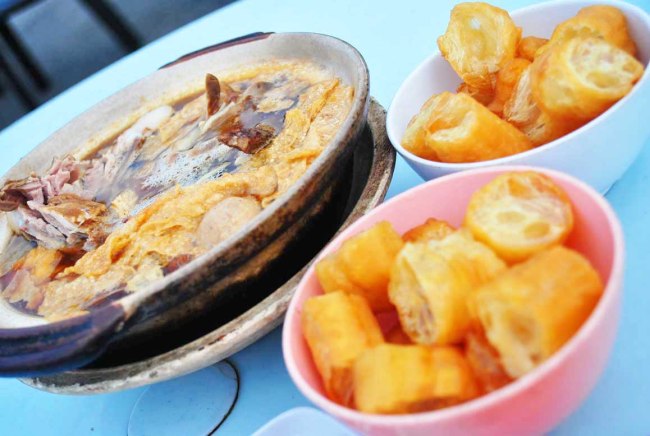Penang, Malaysia is not a destination for people on a lean and mean diet and who derive pleasure from depriving their tongues and tummies of all things tasty and sinful.
Therefore, Penang is my kind of wonderland. An expanding waistline can be cured with more rounds of vigorous sex later on or with an energetic wrestle with the husband to get him to submit to me in the bedroom.
The husband and I flew into Penang on SilkAir on July 28 and rented a car from Hertz at the airport. Having our own transport allowed us to explore the city and stop and eat wherever we fancied.
The downside was, we forgot to reserve a GPS device and they were all snapped up. We had to rely on a very unreliable map. To make things worse, road signs mysteriously disappeared whenever we hit forked roads and intersections. We ended up lost in a wrong part of town and going round and round in circles for over an hour.
So although our flight placed us in Penang at 2.30pm, we only checked into Hard Rock Hotel past 5pm.
Our nerves were frayed and the poor husband was so tired he could not drive anymore. So instead of exploring Batu Ferringhi for dinner, the husband suggested we head to Tree Monkey restaurant at Tropical Spice Garden, just a few minutes’ drive from the hotel for dinner. Thank goodness he did some research before the trip!
And it was a great suggestion. One could catch the sunset from the restaurant, so we had a couple of drinks while the sun slipped over the horizon and then enjoyed a leisurely dinner.
Tree Monkey does Asian and Western cuisine and the menu is extensive. If you can’t make up your mind, which will definitely be the case, go for a tapas platter which comprises six to eight different dishes. Tah dah, so your problem is solved.
If you enjoyed what you ate, you could return to Tropical Spice Garden earlier in the day and attend one of its cooking classes. It was something the husband wanted to do, but we later decided that we wanted much more to eat than to learn how to cook.
The next morning, the husband tore me out of bed at 9am, rushed me through my shower and whisked me off into town. I can understand his enthusiasm. Our plan was to spend a full day navigating Penang’s city centre for food, food and more food, and there was no time to waste!
Right at the top of our eat list was Penang laksa and char koay teow. Both are done very differently from the versions found in Singapore, and after much research, the husband knew exactly where to find the best versions of these two dishes in Penang.
It so happens that they can both be found in the same coffeeshop: Taman Emas, opposite a rather impressive looking Chinese girls school.
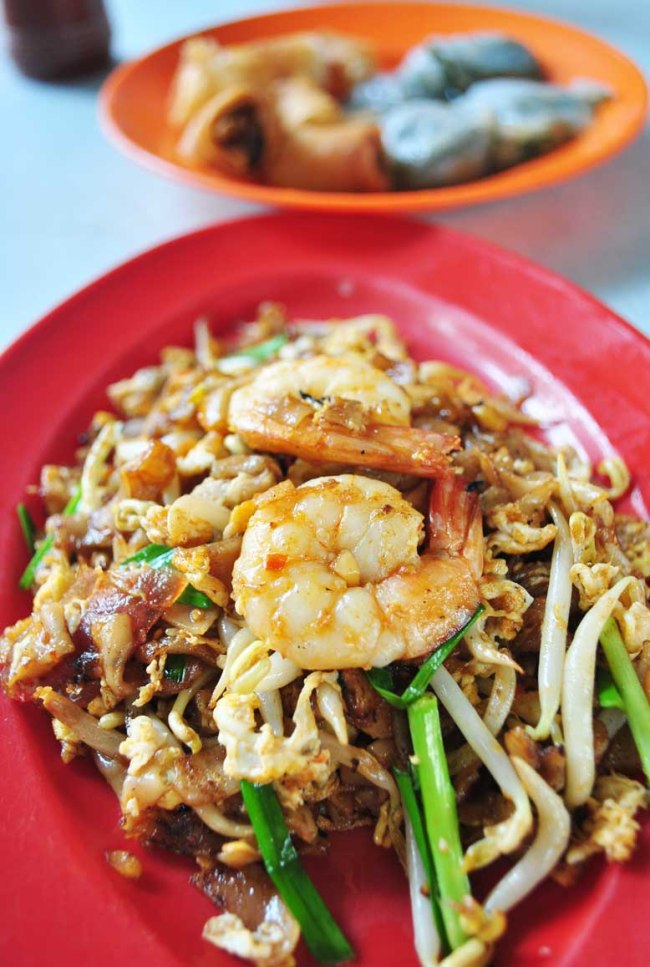 Penang char koay teow is divine! Or perhaps, I should say the version served at Taman Emas is divine. It is savoury and spicy, and the flat rice noodles is chewy. It puts even the most highly recommended char kway teow (spelt this way in Singapore) back home to shame. Singapore’s char kway teow is too sweet and mushy.
Penang char koay teow is divine! Or perhaps, I should say the version served at Taman Emas is divine. It is savoury and spicy, and the flat rice noodles is chewy. It puts even the most highly recommended char kway teow (spelt this way in Singapore) back home to shame. Singapore’s char kway teow is too sweet and mushy.
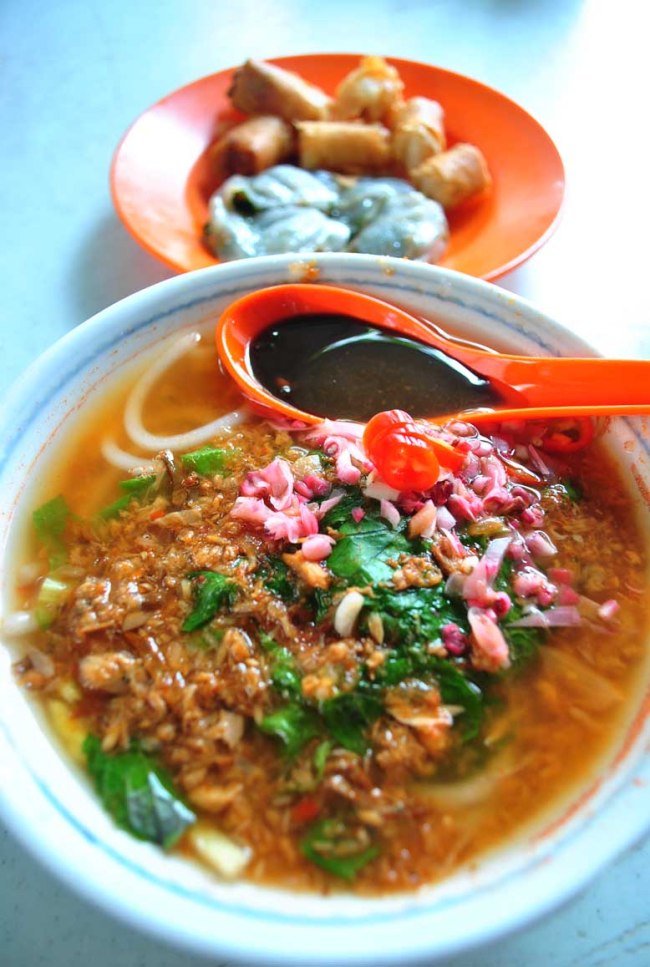 Penang laksa is a real beauty. The way to eat this dish, we were told, is to dip fried spring rolls into the soup, take a bite of the damp roll, and then slurp up a spoonful of laksa. Hmm! The combination was truly wonderful. However, Penang laksa did not excite us a lot because it was heavy with chopped ginger flower, which we hated. Hah, despite so, we cleaned off the bowl. :)
Penang laksa is a real beauty. The way to eat this dish, we were told, is to dip fried spring rolls into the soup, take a bite of the damp roll, and then slurp up a spoonful of laksa. Hmm! The combination was truly wonderful. However, Penang laksa did not excite us a lot because it was heavy with chopped ginger flower, which we hated. Hah, despite so, we cleaned off the bowl. :)
Oh, and that was just breakfast.
After wiping our happy mouths on our sleeves, we hopped into our car and drove further into town. Next stop, Union Primary School. Or rather, a mobile street stall outside Union Primary School.
Look out for a mobile stall with a sign that reads Apong Guan, the husband ordered. So I did. And we found that stall in no time.
Apong is the name for fluffy pancakes wrapped around diced bananas, shredded coconut and sweet corn. Brilliant stuff. And they cost a mere RM0.40 a piece – that’s hardly S$0.20 each!
The husband said that the owner of Apong Guan, has a brother who also runs the same business just a few metres down the road. His brother’s stall is called Apong Chooi. Some food blogs said the owner of Apong Chooi is a real mean bean and has a nasty temper and sharp tongue. But because the banana fritters from Apong Chooi are nicer, it boasts more regulars than Apong Guan.
So the owner of Apong Chooi is a food nazi then!
For me, I’ll gladly support the gentle owner of Apong Guan, who flashed me patient smiles whenever I got a little too close trying to see how he made his wares.
Sweets make me hungry. Always. So after gobbling my last bit of banana fritters, we dived into a bustling coffeeshop opposite the school and ordered a bowl of Hokkien noodles to silence my growling tummy. In Penang, Hokkien noodles is a soupy noodle dish made with prawn stock.
Just look at the colour of the broth and you can tell how much flavour it contains. The cook probably used a helluva lot of prawn heads and shells to make the stock. I’m not surprised if the stock was cooked layer upon layer every day, such that what I drank could contain soup remnants from donkey years ago.
I wanted to have another bowl – not because I was a glutton, but because servings in Penang came ridiculously small! – but the husband bade me to pace myself. The day was still long and there were many things we had to eat.
Next stop, Toh Soon Cafe along Lebuh Campbell in an old part of town. It wasn’t easy to find because of the frustrating lack of road signs to point us in the right direction and the terrible map we had in hand.
We went in circles again. This time for 40 minutes. I lost my temper and gave up trying to be the navigator. So the poor husband turned into a small road and stopped the car.
“Toh Soon Cafe should be somewhere here. Let’s park the car and walk around, that way we can also enjoy the architecture,” he said.
And what do you know? Toh Soon Cafe was immediately down the alley on the left side of where he parked his car! The coincidence made me laugh and my awful temper was gone.
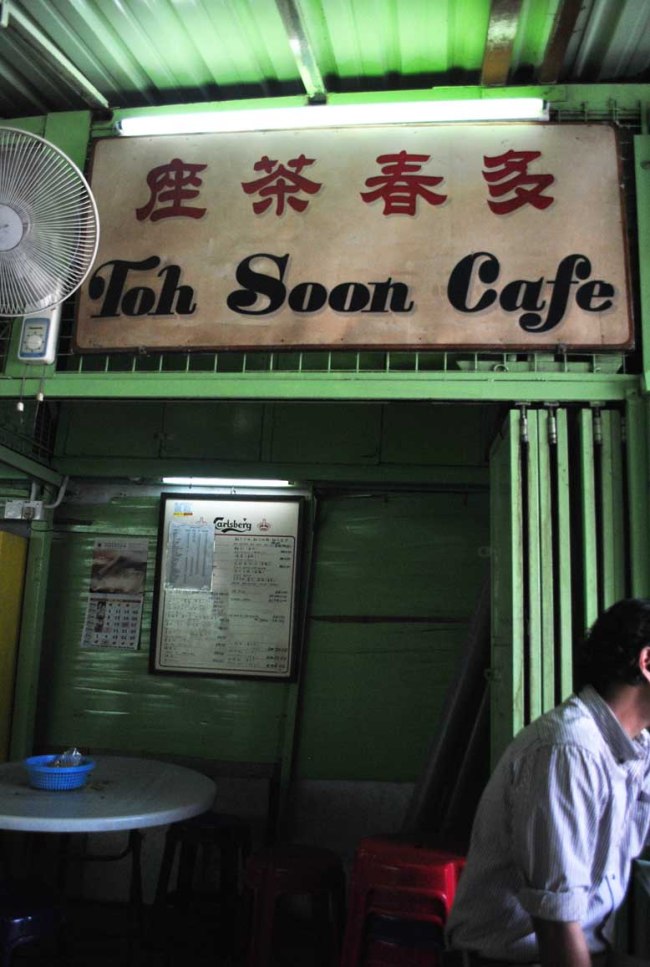 Toh Soon Cafe is an old-fashioned coffeeshop that is more like a hole in the wall, with tables and chairs laid out along an alley. It is famous for its thick coffee served in traditional ceramic cups and butter-and-kaya toasts that were made crisp over charcoal fire.
Toh Soon Cafe is an old-fashioned coffeeshop that is more like a hole in the wall, with tables and chairs laid out along an alley. It is famous for its thick coffee served in traditional ceramic cups and butter-and-kaya toasts that were made crisp over charcoal fire.
I’m not quite a bread person but I really enjoyed the ambiance. It was sort of charming to slowly sip coffee and nibble at toasts, while listening to the chatter of old men.
The husband remembered that there was a Peranakan museum nearby (that boy really did his homework!) and it was where we went after our coffee and toast break.
The Pinang Peranakan Mansion is a restored Peranakan home that was built at the end of the 19th century. You can’t miss it. It is a large green house in a street full of smaller shophouses.
The museum takes visitors back in time to see how rich babas and nonyas lived back then. This museum is said to contain over 1,000 antiques.
It is quite fascinating to wander around the musuem, moving from the airy courtyard to the elaborate main hall and dining room, and from fancy bedrooms to the solemn prayer and ancestor hall. I felt like I was trespassing through someone’s home! :)
We spent almost two hours at the museum and were quite sleepy when we exited the attraction. The afternoon heat did not help, so we made a beeline for the hotel and stole a quick nap before dinner. :)
That evening, we made like the horde of tourists who stayed around Batu Ferringhi and had dinner at the Long Beach Cafe.
Long Beach Cafe is a mad-busy hawker centre housing a cluster of food stalls. The stalls sold all sorts of cuisines – Chinese, Malay, Indian, Thai, Japanese, Western – and all sorts of dishes. To cater to foreigners, the hawker centre also sold a variety of imported beers usually found in fancier bars.
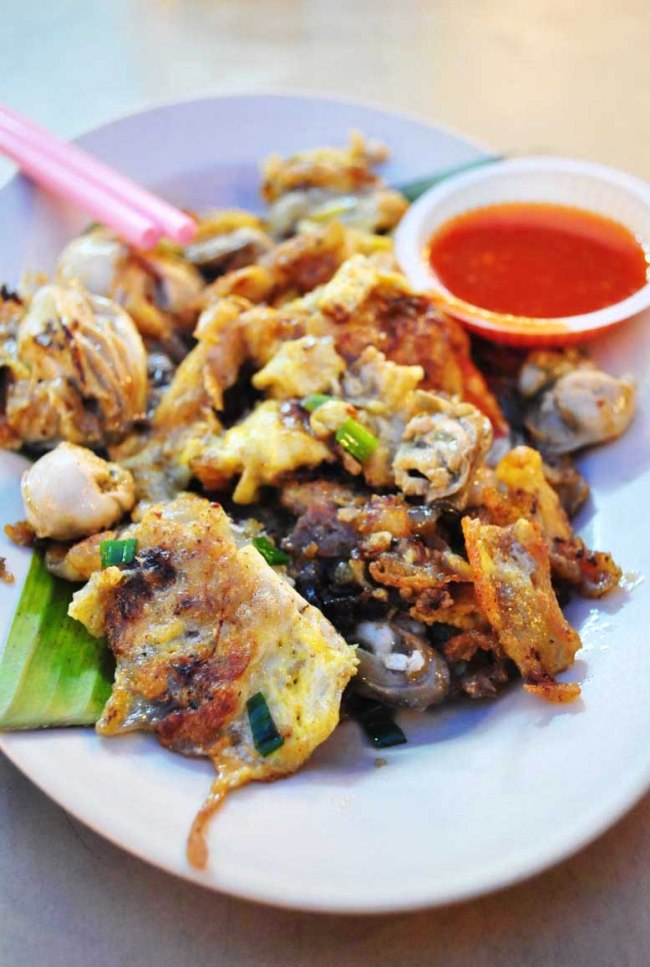 We ordered some grilled seafood, char koay teow, a traditional Hainanese fried spring roll and fried oysters. The grilled seafood was brilliant, the char koay teow was not as good as the one from Taman Emas, the fried spring roll had too much yam for my liking and the fried oysters made me smile because it did not have the muddy, shellfish taste I always get from the same dish in Singapore.
We ordered some grilled seafood, char koay teow, a traditional Hainanese fried spring roll and fried oysters. The grilled seafood was brilliant, the char koay teow was not as good as the one from Taman Emas, the fried spring roll had too much yam for my liking and the fried oysters made me smile because it did not have the muddy, shellfish taste I always get from the same dish in Singapore.
That night, we went to bed with such happy bellies.
After two days of stuffing our faces with Penang’s finest delights, our plan was to take things slower on the third day and laze by the hotel pool and bronze our bodies.
However, the husband woke me up at 10am, saying he was starving and wanted some dim sum. So off we went into Penang’s China Street in search for old-school dim sum. We found it soon after turning onto China Street.
The little shop did not come highly recommended by food blogs and guides, but it was an immediate solution for the husband’s cravings. The dim sum we had were not to-die-for, but they were truly old-school.
What turned the drab morning breakfast around was this humble bowl of koay teow soup – flat rice noodles with chewy fishballs and crunchy fried onion bits.
This seemingly unlikely winner was so delightfully light, yet so tasty. I am hardly a fan of fishball noodles because it was a dish I associate with being ill. Dad always made this or plain porridge for me whenever I fall sick, and I hate bland food. But I could eat this Penang version every day!
The husband also had a hefty bowl of wanton noodles from this stall in the same coffeeshop.
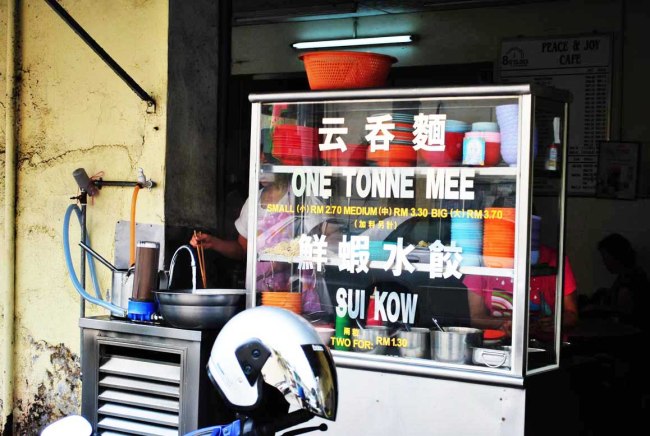 It reminded me of a riddle I’ve heard since young.
It reminded me of a riddle I’ve heard since young.
Q: Which hawker is the strongest of them all?
A: The wanton (one-tonne) mee seller!
Then we drove around a bit to see more of Penang’s old places.
For our final dinner in Penang, we went to Kang Ho Coffeeshop on Mount Erskine Road. A food blogger recommended this place for excellent fried oysters.
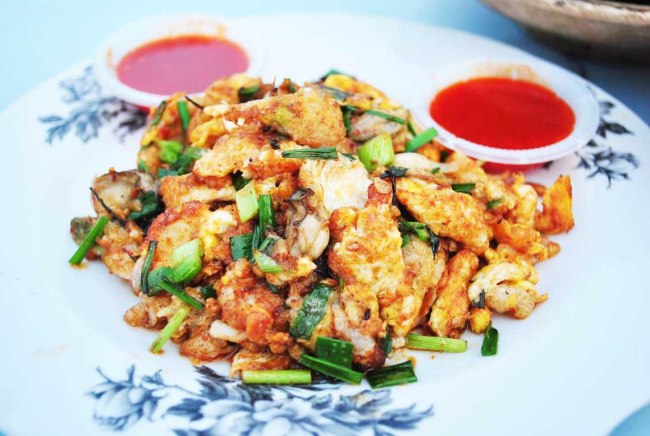 That food blogger did not lie. :)
That food blogger did not lie. :)
We also had a pot of bak kut teh, a herbal pork rib soup that goes wonderfully well with fried dough fritters.
The version found here was murky and looked so messy, it dampened our appetite. But it is proof that one should not judge a book by its cover. The soup turned out to be a real flavour bomb and was packed with a variety of mushrooms and tau pok (sponge tofu), in addition to chunks of meat.
We were quite reluctant to leave Penang the next day. There are still so many eateries we’ve not gone, so many celebrated local dishes we have not sampled.
“Let’s have our favourite dish here before we say goodbye,” chirped the husband and we unanimously agreed that parting dish should be Taman Emas’ char koay teow.
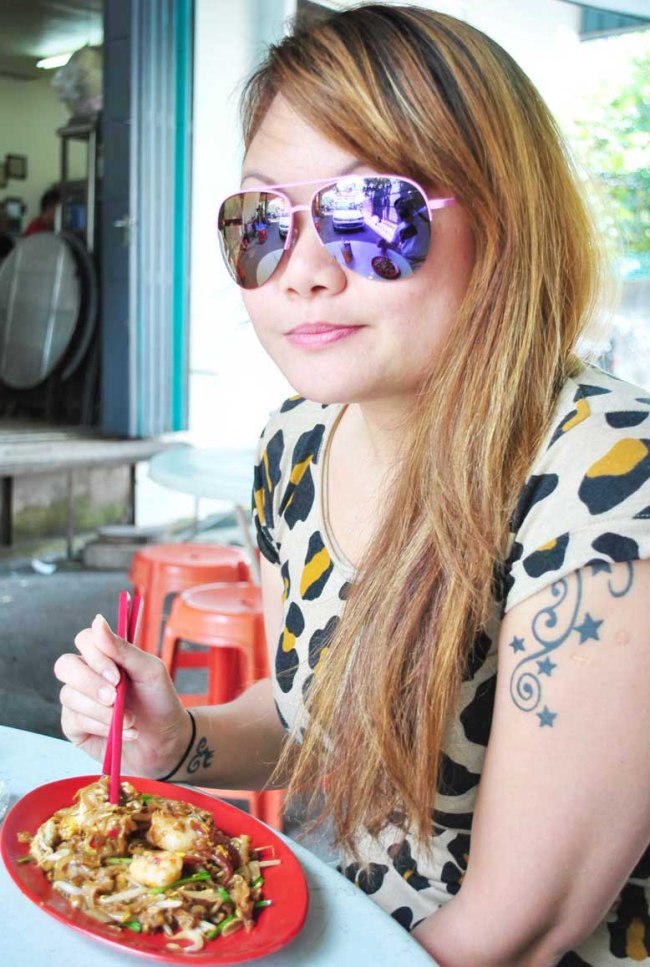 I love Penang. Because of its thriving hawker food culture, one could really eat a lot without busting the bank. There is no need to dine only at fancy restaurants. Cheap eateries can whip up some excellent stuff. You only need to study a couple of food blogs to know where gastronomic orgasms can be found.
I love Penang. Because of its thriving hawker food culture, one could really eat a lot without busting the bank. There is no need to dine only at fancy restaurants. Cheap eateries can whip up some excellent stuff. You only need to study a couple of food blogs to know where gastronomic orgasms can be found.
The husband and I will return to Penang for sure. Next time round, we will stay in a different part of Penang, perhaps closer to the city centre to save on travelling time. The less we drive, the more time we can spend stuffing our faces! :)
